The Pennsylvania Historical and Museum Commission (PHMC) recently approved 47 new historical markers, one of the largest groups in the program’s history. This year, the nomination process was simplified, making it easier for individuals and organizations to apply. Marker staff offered support earlier in the process, helping more submissions move forward.
Approval Criteria require that marker subjects have statewide and/or national, rather than local or regional, historical significance, as well as having substantial association with Pennsylvania. The Marker Program encourages broad distribution, so individuals and organizations from all 67 counties are encouraged to research their history and develop nominations for people, places, events, and innovations in their own area.
Many of the newly approved subjects will contribute to Pennsylvania’s celebration of America250 in 2026. Others highlight the Commonwealth’s pivotal role in the broader American story. From artists and athletes to industrial and medical breakthroughs; from landmark court cases to equal rights advocates; from cultural identity to the Underground Railroad, these markers capture both the proud and difficult chapters of Pennsylvania’s history.
America 250
The 1786 Whiskey Riot (Washington County) was a local protest against Pennsylvania state taxes prior to the larger Whiskey Rebellion (1791-1794) against federal taxes. William Graham, excise collector for Pennsylvania, was attacked by a mob of about 100 people and ran out of Cross Creek to the Monongahela River.
Carpenters’ Hall (Philadelphia) was home to the Carpenters’ Company of Philadelphia, the oldest extant trade association in North America. It hosted the First Continental Congress, the Pennsylvania Provincial Conference, the First and Second Banks of the U.S., among other key events. Often called “the Birthplace of Liberty” and “the Birthplace of the Commonwealth of Pennsylvania,” it holds a central place in American history.
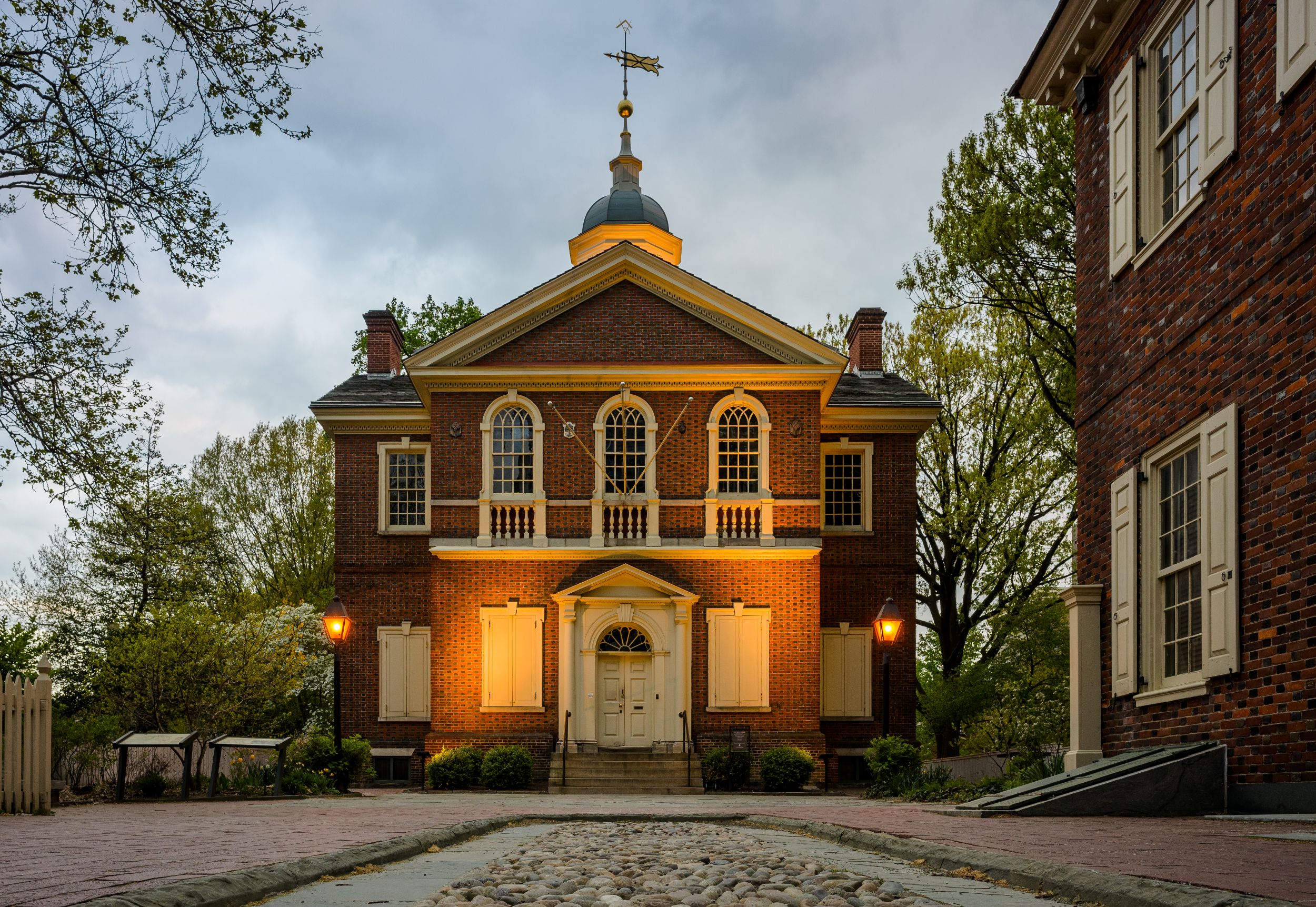
Carpenter’s Hall. Image by Pbjamesphoto, CC BY-SA 4.0 , via Wikimedia Commons.
Gouverneur Morris (1752-1816) (Philadelphia) is known as the “Penman of the Constitution” for his role in drafting the Preamble, “We the People.” He attended the Constitutional Convention of 1787 as a Pennsylvania delegate and resided at Mary Dalley’s boarding house at the time.
Marie Ferree (1653-1716) (Lancaster County) was the figurehead of the Huguenot settlement and her family were one of the earliest settlers in Lancaster County.
Peter Wentz Farmstead (Montgomery County) served as Washington’s headquarters for many days during the 1777 campaign. The site is also notable for its architectural significance—a rare example of a bifurcated German Georgian building that reflects the coexistence of “English” and “German” cultural traditions in the region.
Towamencin Encampment (Montgomery County) From October 8-16, 1777, Washington’s Continental Army regrouped and rested on the banks of the Skippack Creek after retreating from the Battle of Germantown. Washington used the nearby home of Frederick Wampole as his headquarters.
Art
Horace Trumbauer (1868-1938) (Montgomery County) came to prominence as an architect during the Gilded Age. His body of work is found throughout the East Coast. Most famous for his designs of manor homes for the wealthy elite and numerous collegiate buildings, he also designed hotels, office and commercial buildings.
Minerva Parker Nichols (1862-1949) (Montgomery County) was the first practicing nineteenth-century female architect in Pennsylvania and operated her own architectural practice. She designed houses, schools, churches, commercial and industrial structures, and clubhouses.
Moses Williams (1776-1830) (Philadelphia) is recognized as one of the first Black museum professionals in America, holding an important role at the Peale Museum. He was a skilled and prolific silhouette artist whose work is held in major institutions like the Philadelphia Museum of Art and the Smithsonian.
Olive Thomas (1894-1920) (Allegheny County) was a silent film star whose brief, headline-grabbing career helped shape the 1920s idea of the “flapper.” As a working-class woman who rose from Charleroi to fame in the New York film scene, she showed how ambition and talent could open doors in early Hollywood.
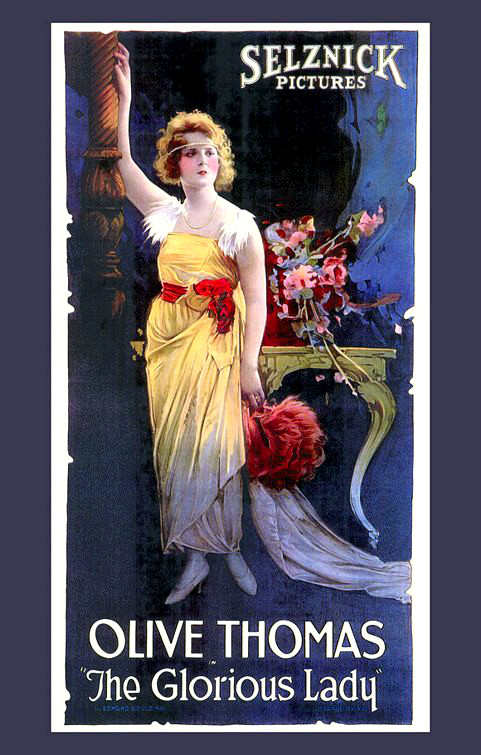
Olive Thomas. Image from By Selznick Pictures – Movieposterdb.com, Public Domain, https://commons.wikimedia.org/w/index.php?curid=57748240.
Peter Attie Besharo (1912-1960) (Armstrong County) was a Syrian immigrant and artist whose pieces featured in major collections like the Smithsonian American Art Museum. His work reflects themes such as war and space, offering a unique lens on the events of his time, including two world wars, the Cold War, and the space race.
Richard Anuszkiewicz (1930-2020) (Erie County) began his love of art by drawing on paper his father brought home from the paper mill, reflecting both his working-class roots and a lifelong dedication to visual experimentation. As the son of Polish immigrants, his ascent in the national OpArt movement underscores the broader narrative of American modernism shaped by immigrant voices and industrial-era ingenuity.
Sarah Stilwell Weber (1878-1938) (Delaware County) was an illustrator for the Saturday Evening Post, where her work reached a wide national audience during a formative period in American visual culture. At the height of her career, she was reported to be among the top-earning women illustrators, reflecting both her popularity and professional success. Her illustrations for magazines and advertisements helped shape public perceptions of everyday life and identity in early 20th-century America.
Law & Policy
George B. Vashon (1824-1878) (Allegheny County) was the first Black graduate of Oberlin College and a lawyer who, after being denied admission to the Pennsylvania Bar because of his race, went on to pass the New York Bar and later serve as president of Avery College. A tireless advocate for abolition, education, and civil rights, he left a lasting legacy in Pittsburgh, where his family continued his work, and was posthumously admitted to the Pennsylvania Bar.
The Integration of Levittown (Bucks County) In 1957, the Myers family became the first Black residents of Levittown, PA, facing violent backlash including mobs and cross burnings. Their struggle led to a 1958 court injunction protecting them and helped prompt the 1961 amendment to Pennsylvania’s Human Relations Act banning racial housing discrimination.
The Kensington Riots of 1844 (Philadelphia) arose from religious and ethnic tensions amid increasing immigration. The violence prompted early discussions about law enforcement and community relations across racial and ethnic lines.
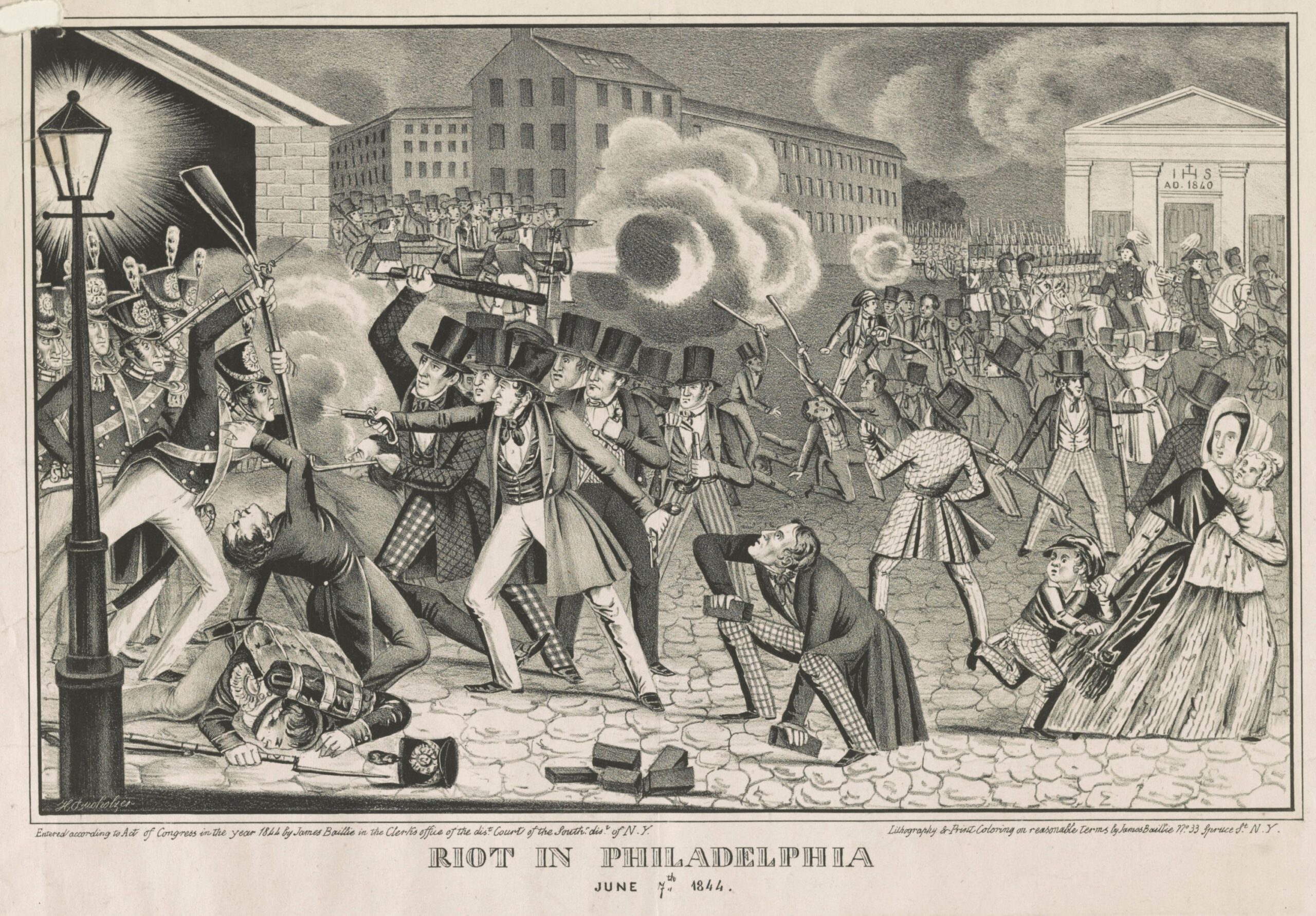
The Kensington Riots. Image by Bucholzer, H., artist – Library of Congress Catalog: http://lccn.loc.gov/2003654121.
The Lynching of Richard Puryear (Monroe County) The national coverage of the lynching of Richard Puryear in Stroudsburg in 1894 added to the momentum which birthed the NAACP and eventually led to the Emmet Till Antilynching Act of 2022. It is one of at least two confirmed lynchings of African Americans in Pennsylvania. Another is Zachariah Walker in Coatesville in 1911, which received a marker in 2006.
Pennsylvania Coal Company v. Mahon (Luzerne County) was a landmark Supreme Court decision that helped define constitutional limits on government regulation of private property, shaping American property rights law.
Raymond Pace Alexander (1897-1974) (Philadelphia) was a leading Civil Rights attorney, first Black graduate of the Wharton School of Business, and first Black judge appointed to the Pennsylvania Court of Common Pleas.
Schenck v. United States (Philadelphia) The 1919 Supreme Court case over Charles Schenck’s arrest reshaped the national debate on free speech during wartime, with Justice Holmes’ opinion setting lasting legal precedent.
Industry & Innovations
The 6502 Microprocessor (Montgomery County) was foundational to early home and gaming computers. While initially conceived in Texas, the developers took their work to Pennsylvania, where it was supported by MOS Technology.
Buggy Town (Union County), nickname for Mifflinburg, was a hub of buggy manufacturing from 1870 to 1920. Multiple companies, such as William A. Heiss Coach Works and the Hopp Carriage Company, established themselves and contributed to the town’s major industry.
Chemical Copper Company’s Electrolytic Copper Refinery (Chester County) in Phoenixville is considered the first in the U.S. (1878–79) to use electrolytic refining to produce high-grade copper essential for electrical use, including modern electronics, energy, and construction.
The Conewago Canal (York County) was a catalyst for the development of an entire canal system in the state and for the economic growth resulting from this means of quickly and efficiently transporting cargo.
The Crayola Crayon (Northampton County) was the world’s largest crayon producer from 1903 to 1978. This cultural icon shaped childhood creativity worldwide.
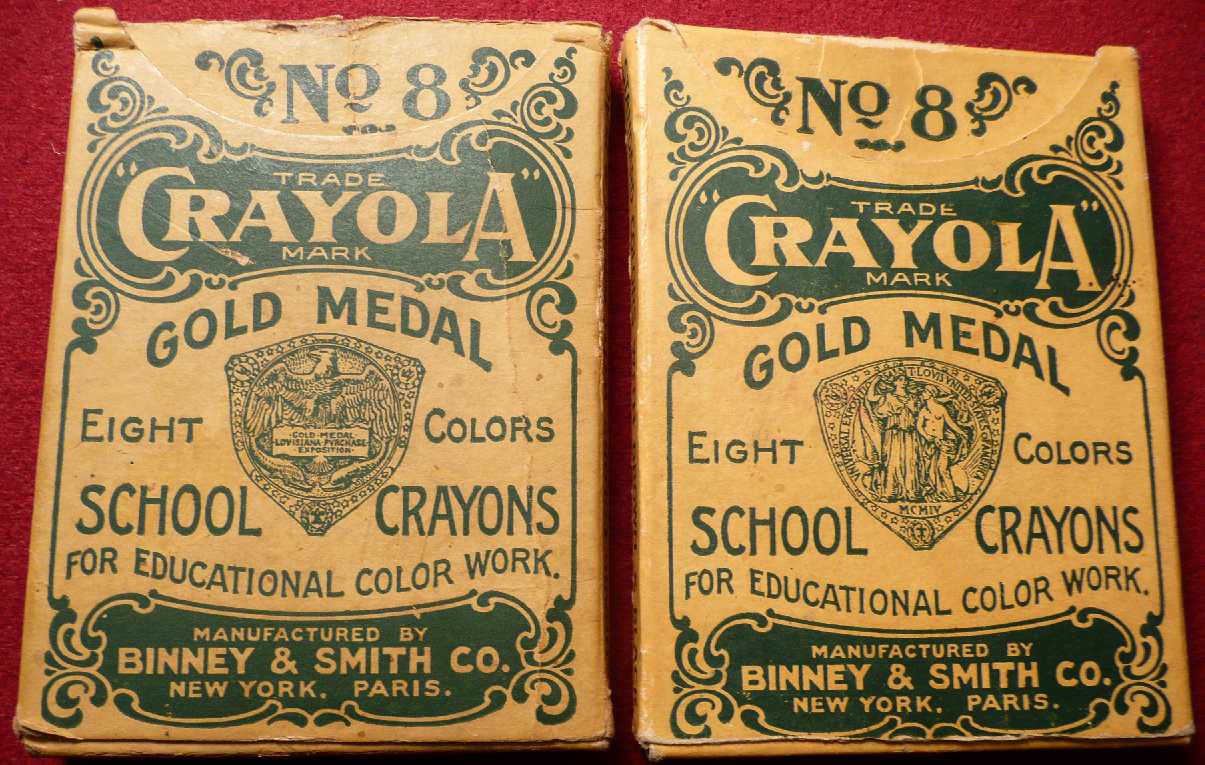
Early Crayola crayon boxes. Image by Ed Welter – Own work, CC BY-SA 3.0, https://commons.wikimedia.org/w/index.php?curid=9757023.
Howells Mining Drill Company (Luzerne County) created quality drills and tools and shipped worldwide. It held many patents and improved established drills.
Joel Hill Sawmill (Wayne County) was an important part of Pennsylvania’s lumber industry and exemplifies the state’s once-critical milling operations. Key figures in its history, including Holbert and Branning, played significant roles in its development and success.
McCrory and Murphy 5 & 10 Cent Stores (Indiana County) John Graham McCrory (1860-1943), George Clinton Murphy (1868-1909), and John Sephus Mack (1880-1940) were Pennsylvanians who shaped American consumer culture by founding five-and-dime stores. Their businesses, including McCrory and G.C. Murphy, left a lasting commercial legacy in retail history.
Medicine
Bellevue-Stratford Hotel (Philadelphia) In 1976, the hotel was the site of a Legionnaires’ convention where the Legionella bacteria outbreak was first identified, leading to new public health regulations.
Hospital of the University of Pennsylvania (Philadelphia) was the first university-owned teaching hospital in the U.S. Known for its groundbreaking work dating back to the 19th century, it has driven research, treatments, and education while pioneering fields like radiology, neurosurgery, ophthalmology, and dermatology.
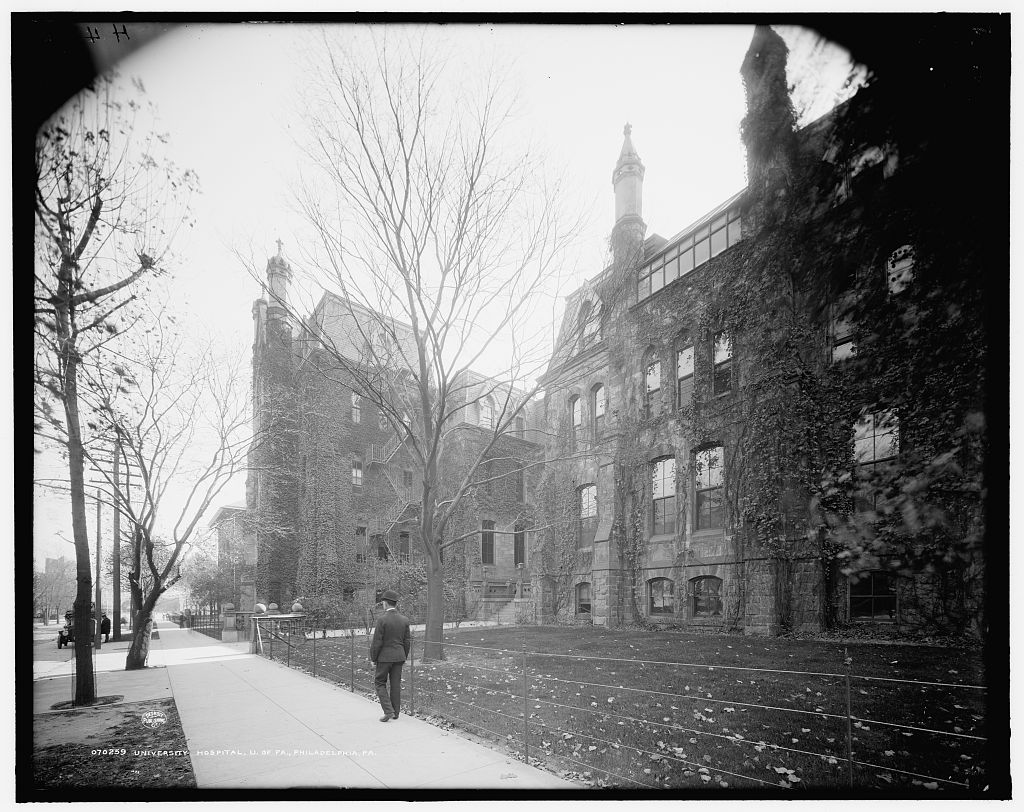
University Hospital. Image from Library of Congress, https://www.loc.gov/pictures/item/2016813879/.
Military Heroes
Charles E. “Commando” Kelly (Allegheny County), Medal of Honor recipient, became a central figure for selling war bonds during WWII. The use of his story in comics for the war bond campaigns also left an impression on pop culture of the time.
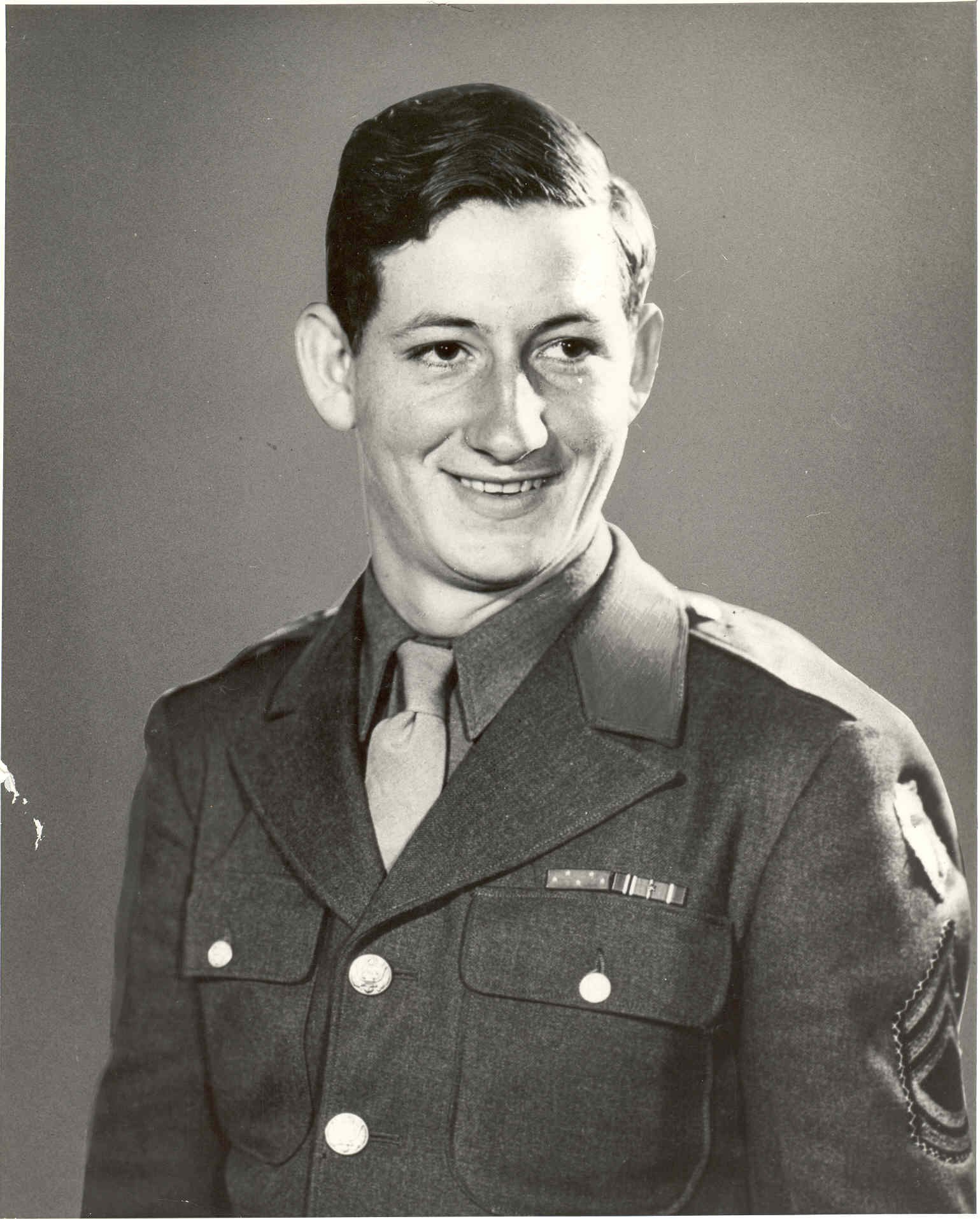
Charles “Commando” E Kelly. Image from https://www.cmohs.org/recipients/charles-commando-e-kelly.
David McMurtrie Gregg (1833-1916) (Huntingdon County) played a crucial role in the Gettysburg Campaign. Leading Union cavalry, he protected the army’s flanks and fought off Confederate cavalry, helping secure victory on the battle’s final day.
Place & Identity
Black Bottom (Philadelphia) was a historically Black neighborhood displaced in the 1960s to make way for University City. It represents the loss of long-established communities and historic places in the name of urban renewal.
The Diamond Rock Schoolhouse (Chester County) is an early example of free public education and for its octagonal design, thought to improve light and space. Its later preservation and use as Wharton Esherick’s studio highlight both community pride in historic places and the building’s continued role in Pennsylvania’s artistic and cultural life.
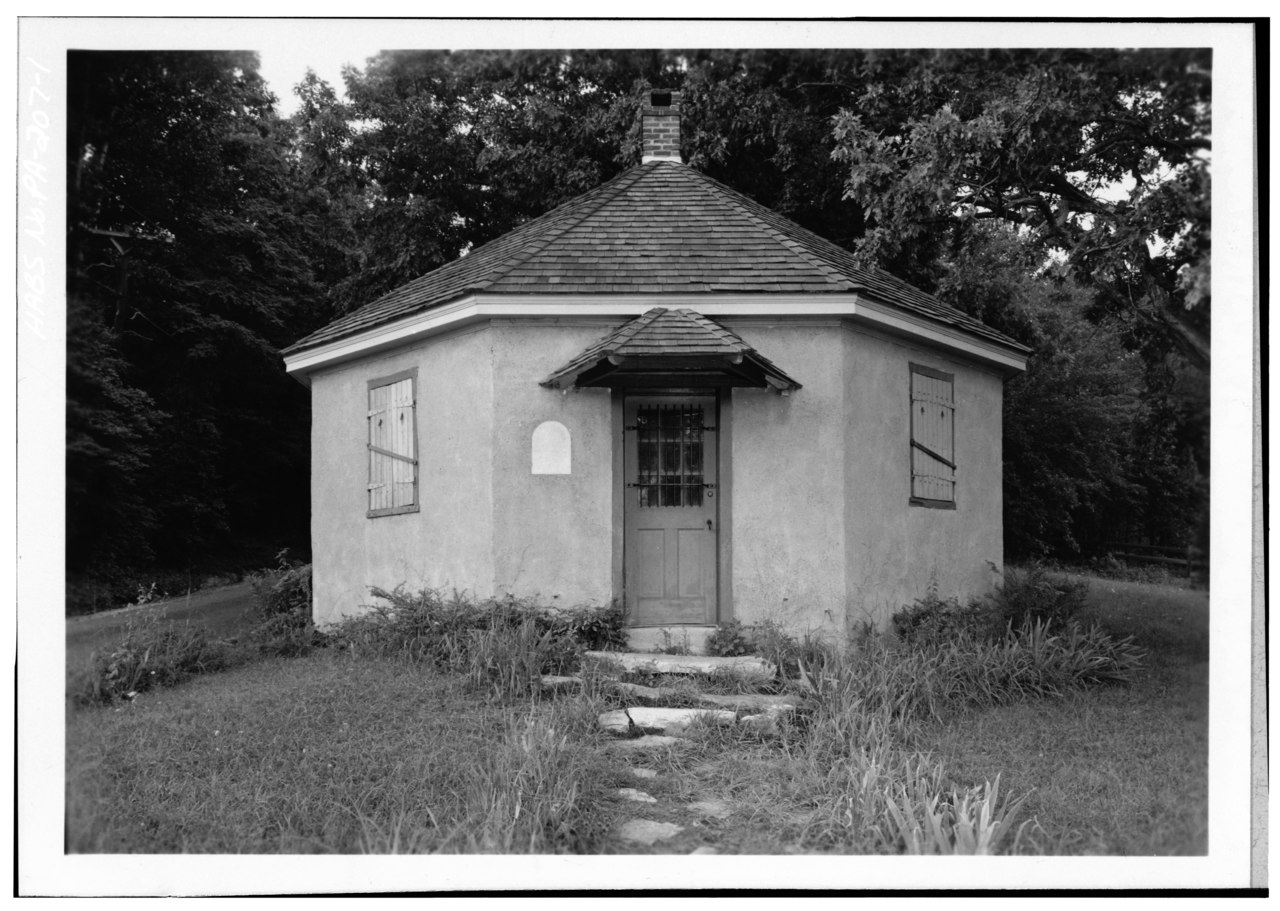
Diamond Rock Schoolhouse. Image from https://www.loc.gov/pictures/item/pa0300.photos.132236p, Public Domain, https://commons.wikimedia.org/w/index.php?curid=34445541
Mt. Tabor AME Zion Church and Cemetery (Cumberland County) represents a broader and often underrepresented history of rural African American communities and their institutions in Pennsylvania. Its architectural significance, combined with the remarkable community-led restoration effort in recent years, underscores its value.
Philadelphia Hostel (Philadelphia) played a key role in Japanese American resettlement after World War II, reflecting local Quaker support and broader themes of justice and recovery.
St. Benedict the Moor Church (Allegheny County) is a Black Catholic parish with ties to the national African American Catholic movement. Its location at Pittsburgh’s Freedom Corner made it a focal point for the Civil Rights Movement.
Reformers & Organizations
Florence Kelley (1859-1932) (Philadelphia) played a significant role in Progressive-era social reforms, leading efforts to secure labor protections for women and children and serving as director of the National Consumers’ League for 33 years.
Ethel Hedgeman Lyle (1887-1950) (Philadelphia) helped organize Alpha Kappa Alpha in 1908 at Howard University, the first African American sorority. In Philadelphia, she led the Omega Omega chapter, served on mayoral committees, and taught in city schools for 25 years.
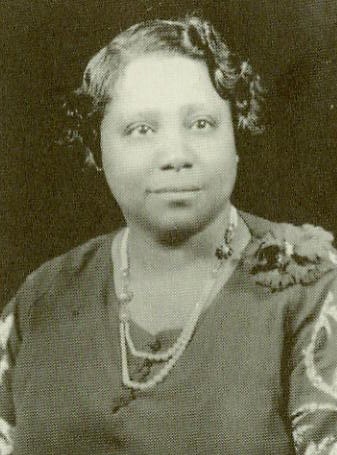
Ethel Hedgemon Lyle. Image from Alpha Kappa Alpha, CC BY-SA 3.0 , via Wikimedia Commons.
The Fraternal Order of Police (Allegheny County) began in 1915 with two Pittsburgh officers and rapidly expanded, adding multiple Pennsylvania lodges by 1917 and holding its first National Convention in Pittsburgh that same year. It has since grown into a nationwide organization serving 377,000 members across 2,200 lodges, making it a significant force in law enforcement communities.
Ida Porter Boyer (1859-1952) (Schuylkill County) was a prominent suffragist from Schuylkill County. She acted as press secretary for the Pennsylvania Woman Suffrage Association, and as press chair and campaign manager/field secretary for the National Women’s Suffrage Association.
Sports
Edith “The Kid” Houghton (1912-2013) (Philadelphia) was a trailblazing baseball player, competing against men’s teams in the 1920s, traveling to Japan to play baseball, and becoming what is widely recognized as Major League Baseball’s first woman scout in the 1940s.
Green’s Ladies Golf Club (Philadelphia) was the first Black women’s golf club in Philadelphia. It promoted access and youth training during segregation, and offered an opportunity for Black women to participate in the national circuits.
Pittsburgh Civic Arena (Allegheny County) was part of Pittsburgh’s first Renaissance in revitalizing downtown and the world’s first retractable roof stadium and opened in 1961. It was originally built as an opera house, became the home of the NHL Pittsburgh Penguins hockey team, and a concert venue for many famous touring musical acts, like: The Beatles, Grateful Dead, and Heart.
Roberto Clemente (1934-1972) (Allegheny County) spent nearly half his life in Pennsylvania playing for the Pittsburgh Pirates from 1955 to 1972. Over the course of his career, he recorded 3,000 hits, was a 15-time All-Star, earned 12 Gold Glove Awards, and was inducted into the National Baseball Hall of Fame.

Roberto Clemente. Image from By Unknown author – Associated Press Alamy, Public Domain, https://commons.wikimedia.org/w/index.php?curid=167747069.
Underground Railroad
The Underground Railroad at Belmont Mansion (Philadelphia County) was the home of Judge Richard Peters, opponent of the Fugitive Slave Act. Cornelia Wells, a formerly enslaved woman who purchased her freedom from Peters, helped shelter escapees. It was recognized by the National Park Service’s Network to Freedom in 2006.
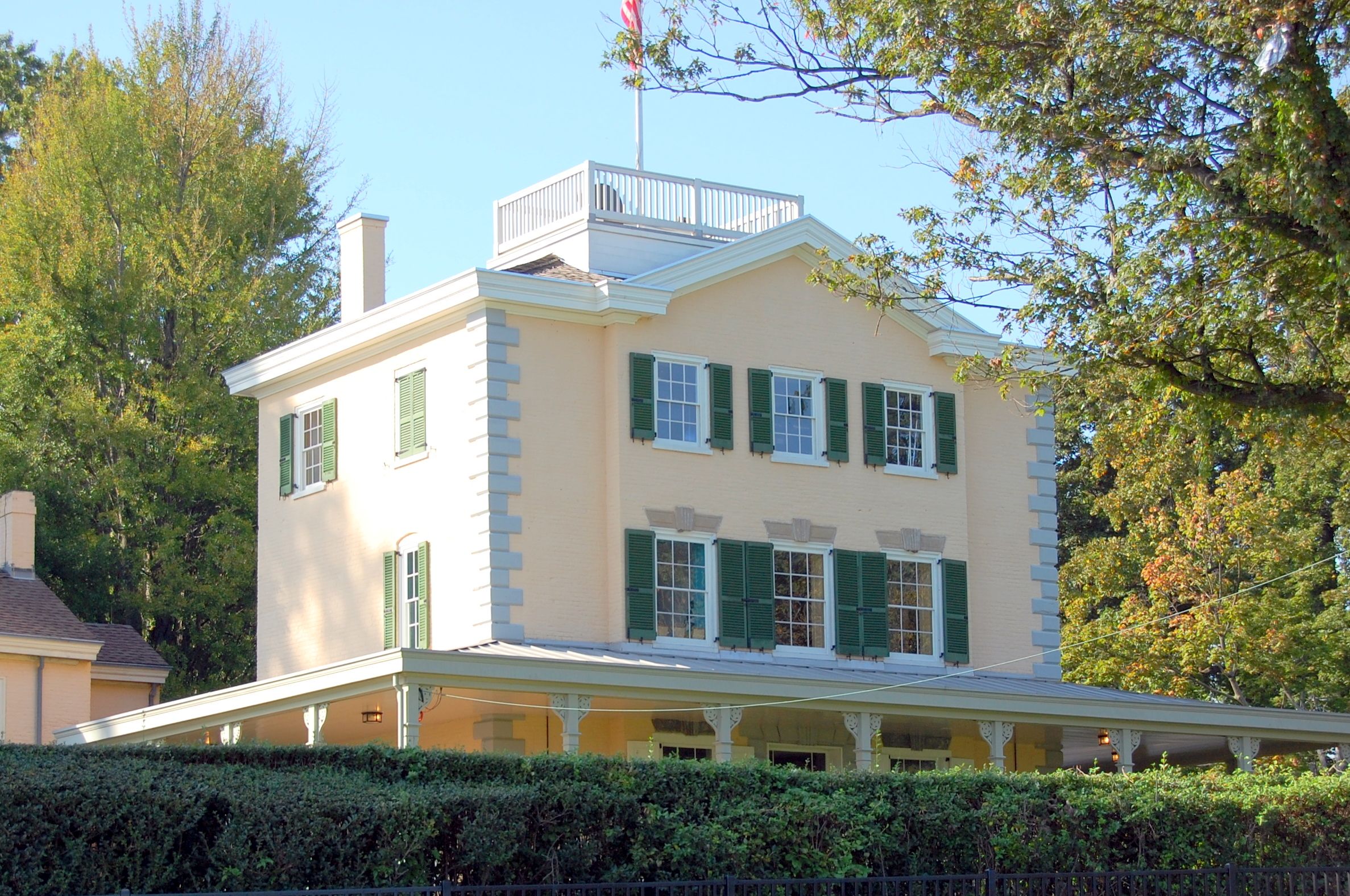
Belmont Mansion. Image by By See below – Wiki Takes Philadelphia, CC BY-SA 3.0, https://commons.wikimedia.org/w/index.php?curid=8076540.
The Underground Railroad in Africa / Brownsville (Franklin County) Founded in the 1830s, this African American community was a documented stop on the Underground Railroad, where residents helped guide freedom seekers north. It was recognized by the National Park Service’s Network to Freedom in 2008.
Comment Policy
PHMC welcomes and encourages topic-related comments on this blog. PHMC reserves the right to remove comments that in PHMC’s discretion do not follow participation guidelines.
Commenters and Comments shall be related to the blog post topic and respectful of others who use this site.
Commenters and Comments shall not: use language that is offensive, inflammatory or provocative (this includes, but is not limited to, using profanity, obscene, or vulgar comments); disparage other commenters or people; condone illegal activity; identify the location of known or suspected archeological sites; post personal information in comments such as addresses, phone numbers, e-mail addresses or other contact details, which may relate to you or other individuals; impersonate or falsely claim to represent a person or an organization; make any commercial endorsement or promotion of any product, service or publication.
If you would like to comment on other topics not related to this blog post but related to PHMC, please fill out the PHMC Contact Us Form.
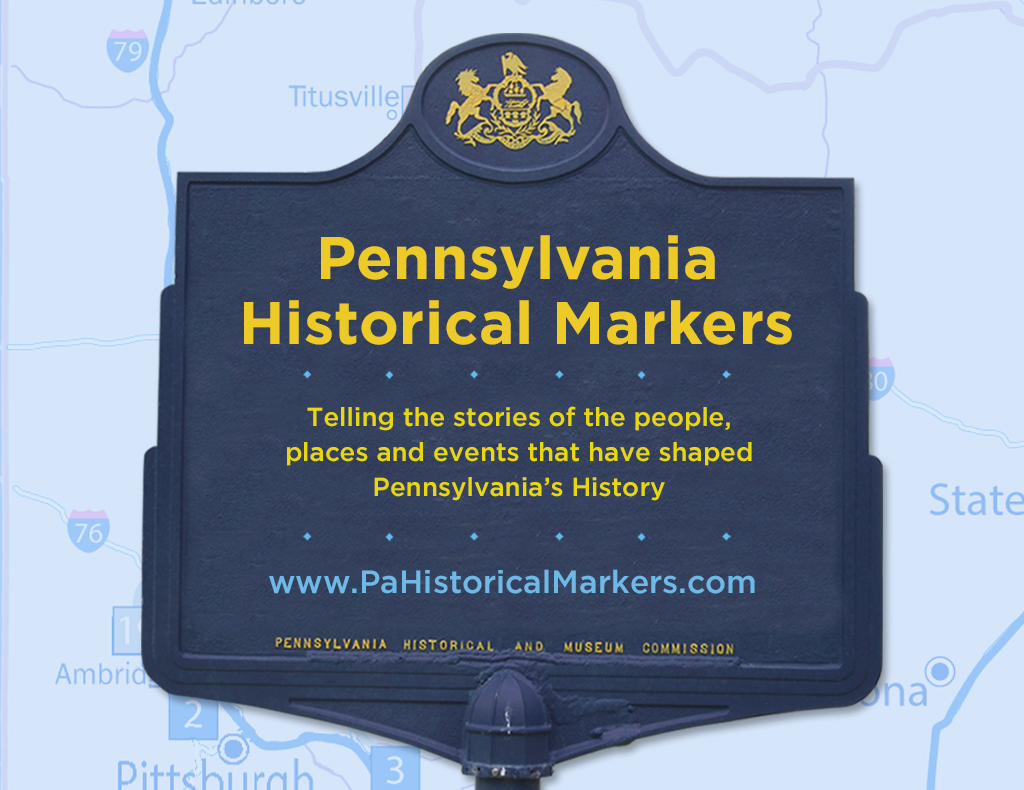
So 7+ years for the walking purchase sign to be replaced rt 903, bond farm !